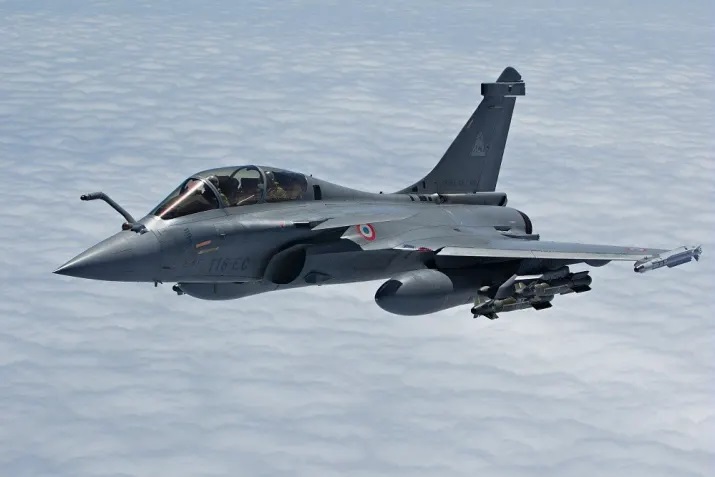With Indonesia planning to buy the French Rafale jets and Boeing F-15EXs, experts are drawing comparisons with the Indian Air Force (IAF). The latter maintains a fleet of Rafale jets, and are also seriously considering F-15EX offered by Boeing.
India’s Defense Space Agency Hunting For New Technology That Can Track Enemy Assets
Global aerospace companies are fiercely competing to supply combat aircraft to Indonesia, with Boeing and Dassault in the lead. The two companies, which are the main contenders, plan to provide at least a squadron to the Indonesian Air Force.
Boeing has also been wooing the Indian Air Force (IAF) with the F-15EX fighter aircraft after the aerospace giant got the go-ahead from the US government to sell the fighters in foreign countries. Interestingly, India has already signed a deal to procure 36 Rafale jets from France and 11 of them have already been received by the country.
Boeing, Rafale, and the Sweden-based Gripen are competing for the IAF’s plan to procure 114 multi-role fighter aircraft to replace its Soviet-era fleet.
Indonesia has also decided to induct the modern Rafales into its air force as it reportedly signed a contract for 36 jets with the company. If all goes well, this will be the country’s biggest defense deal in history, with the planes alone costing around $11 billion.
The Rafales are expected to boost the firepower of the Indonesian Air Force, which currently has a fleet of Su-30 fighters and three squadrons of F-16s. The country has apparently pulled out of a Su-35 deal with Russia amid sanction concerns from the US.
Although the country’s combat aircraft fleet is too small as compared to India, the two countries are arming their air forces with similar aircraft types. Additionally, India flies the aging MiG-21 Bison aircraft, which are way past their scheduled lifespans and will be retired soon. The country is expected to phase out the MiG-21s along with the MiG-23 and MiG-27 from 2022.
Therefore, the future combat fleet of the Indian Air Force will be represented by Rafales, Su-30 MKIs for a considerable amount of time, the indigenous Tejas fighters, and in case India goes for Boeing 15EX.
That looks quite like what Indonesia’s combat fleet is going to be in the near future, with Rafales, Su-30s, and F15EXs leading the charge.
The Indonesian Air Force also fields a wide-range of multirole and light attack fighter aircraft, which mainly includes the F-16 Fighting Falcons, Su-27s, EMB-314s from Brazil, Hawk Mk109s/Mk209s, and T-50i Golden Eagles, although their number is quite small and talks of modernizing the fleet have been growing in the country.
The Southeast Asian country is besieged with many security challenges, one particularly posed by China’s growing hegemony in the surrounding waters of the country. With the US realizing the importance of working with regional allies and partners in order to manage China’s rise as a strategic challenge in the Indo-Pacific region, it will need to ally with Indonesia.

The United States and Indonesia share a deep concern about China’s ambitions for regional dominance and defiance of international norms in pursuit of its ambitions, according to an assessment by the US-based RAND Corporation.
“Indonesia regards China as its only realistic near-term military foe, with a specific potential for a military confrontation over its Natuna Islands near the South China Sea,” the report adds.
India, too, has militarily aligned with the US and has been an important member of the QUAD grouping, which is expanding its ambitions to tackle Chinese expansionism.
India and Indonesia, therefore, may well play in the same team in the near future, although the latter remains opposed to aligning with any bloc, preferring a neutral stance in global confrontations.
Indonesia is also increasingly preferring the US and European markets to modernize its military and has tried its best to avoid the Russia-China bloc, signaling where its strategies might lie in the future.
Although the country has been wary of any military alliance so far, the emerging security scenario in its neighborhood may not offer many choices in the future, and the country may be forced to choose one bloc.
Follow EurAsian Times on Google News




